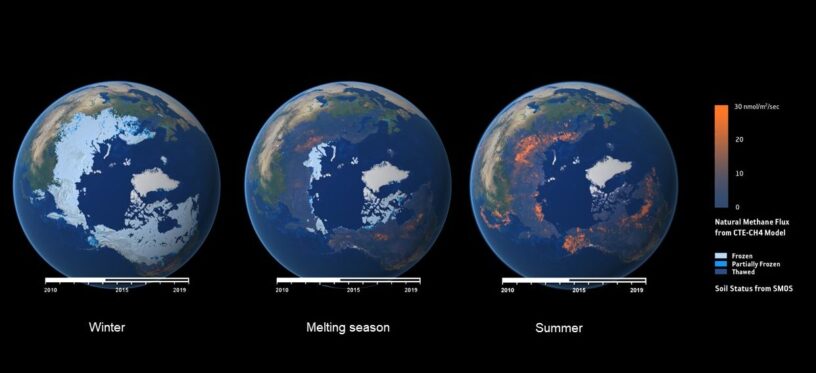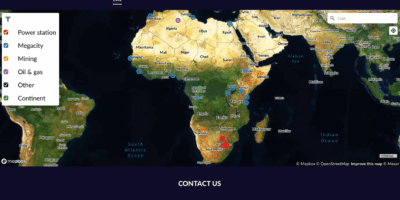Thawing of the Arctic permafrost threatens to release unknown amounts of carbon emissions to the atmosphere. An international research group, together with FMI, calls for more extensive collaborative research to improve measurements and develop modeling for better climate predictions. Their recently published article, co-authored by FMI Research Professor Johanna Tamminen, provides an extensive review of the advances in tracking permafrost carbon dynamics.
In the new Nature Reviews Earth & Environment article, leading researchers investigating Arctic permafrost and carbon cycle state, that the rapid anthropogenic warming and resultant thaw threaten to mobilize permafrost carbon stores, potentially increasing atmospheric concentrations of carbon dioxide (CO2) and methane (CH4), and converting the Arctic from a carbon sink to a carbon source. Despite its importance to climate predictions, this process, and its potential impact on future warming remains highly uncertain.
The researchers emphasize, that a specific challenge in Arctic carbon cycle studies is to understand the several different scale processes affecting the Arctic carbon cycling, e.g. varying from local microbial level changes to changing Arctic in the ecosystem level.
Researchers address the importance of international and multidisciplinary cooperation in solving the problem. Recommended key solution is to develop more detailed monitoring though in situ, airborne and satellite observations, which will provide a deeper understanding of the Arctic’s future role as a carbon source or sink, and the subsequent impact on the Earth system. The role of satellite observations is crucial in the Arctic due to the sparseness of observation networks. New satellite mission will provide advanced tools to assess these processes. For example, the EU-Copernicus program’s Sentinel CO2M built by the European Space Agency (ESA), will provide retrievals of atmospheric CO2 and CH4 concentrations and related emissions in a spatial accuracy beyond that of the previous missions.
The ESA-NASA AMPAC co-operation (Arctic Methane and Permafrost Challenge) has been established to link European and North American research activities. This includes MethEO project, led by Dr. Kimmo Rautiainen, to improve understanding of methane fluxes in Northern high latitudes by using atmospheric and soil Earth Observation data together with inverse modeling. Further, ESA is supporting FMI work lead by Associate Professor Hannakaisa Lindqvist, focusing on improving the feasibility of satellite instruments to monitor atmospheric CO2 and CH4 concentrations above the snow covered regions of the planet. This combines the experience of FMI concerning remote sensing of cryosphere and atmosphere.
FMI work has also been funded by the Academy of Finland’s Centre of Excellence in Inverse modeling and Imaging, and the Academy of Finland’s Finnish Flagship Programme: The Atmosphere and Climate Competence Center (ACCC).
More information:
Research Professor, Head of Unit Johanna Tamminen, johanna.tamminen@fmi.fi
Associate Professor, Head of Group Hannakaisa Lindqvist, hannakaisa.lindqvist@fmi.fi
Article is available in: Nature Reviews Earth & Environment.
Article reference: Miner, K.R., Turetsky, M.R., Malina, E. Bartsch, A., Tamminen, J., McGuire, A.D., Fix, A., Sweeney, C., Elder, C.D., and Miller, C.E, Permafrost carbon emissions in a changing Arctic. Nat Rev Earth Environ 3, 55–67 (2022). https://doi.org/10.1038/s43017-021-00230-3








Leave a Reply
You must be logged in to post a comment.